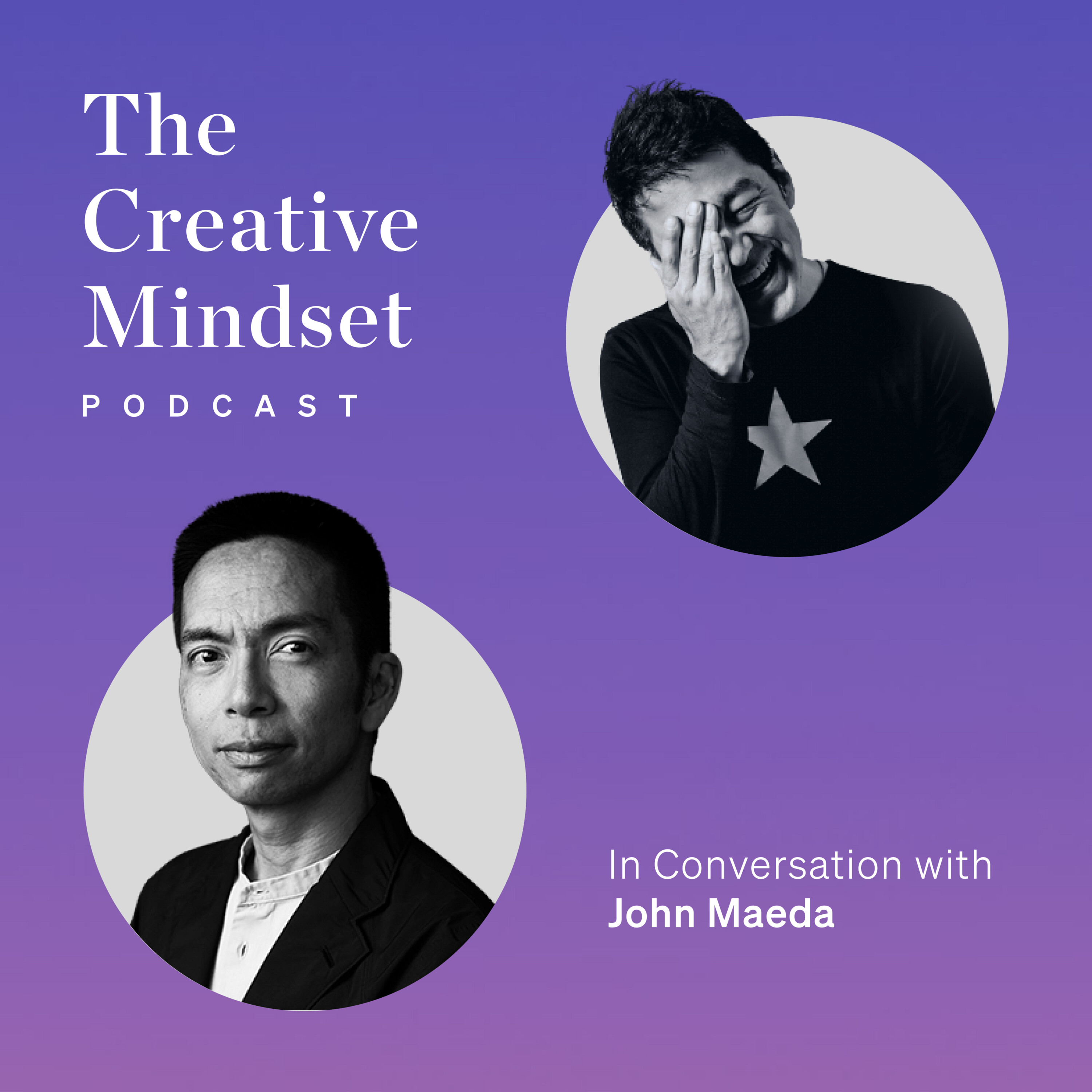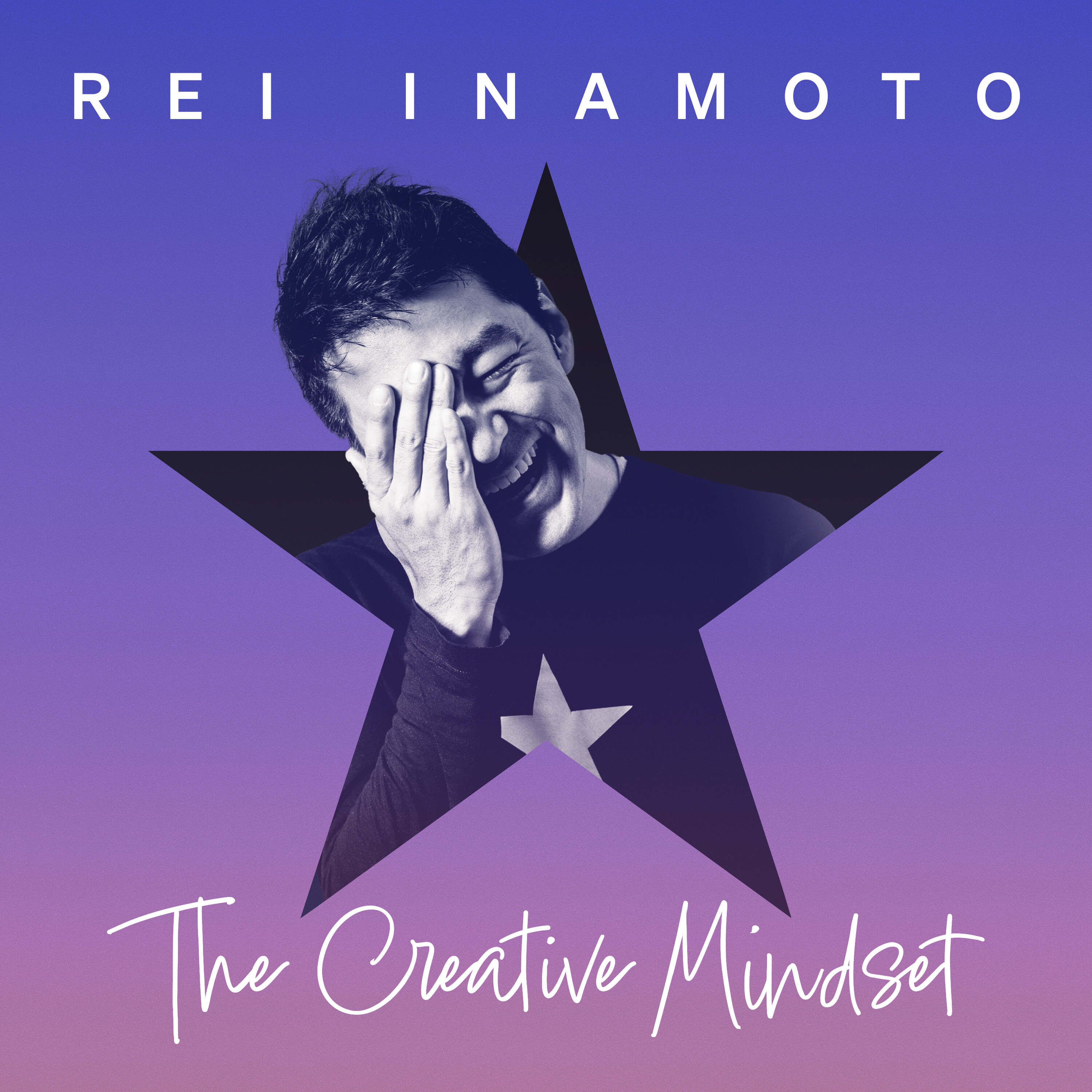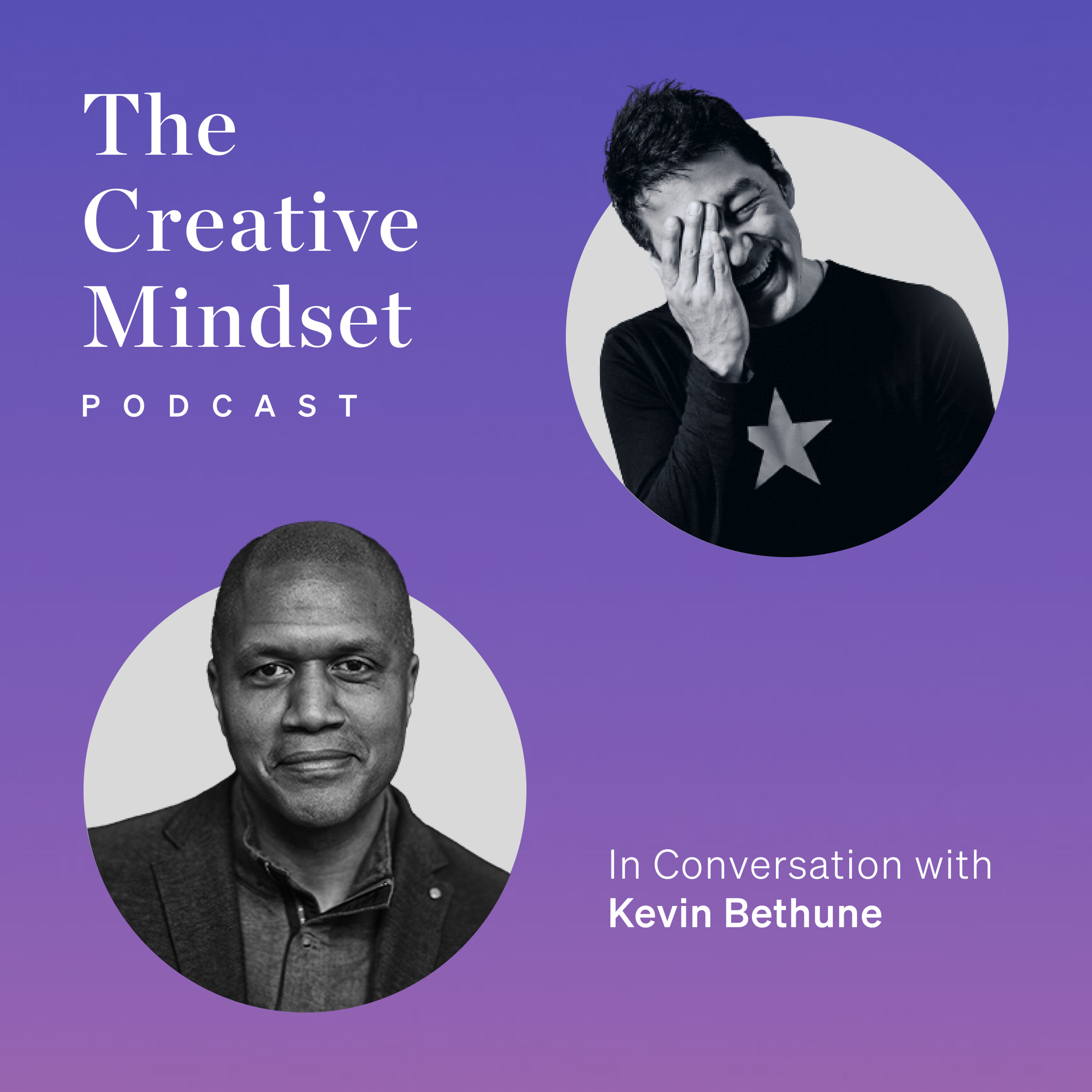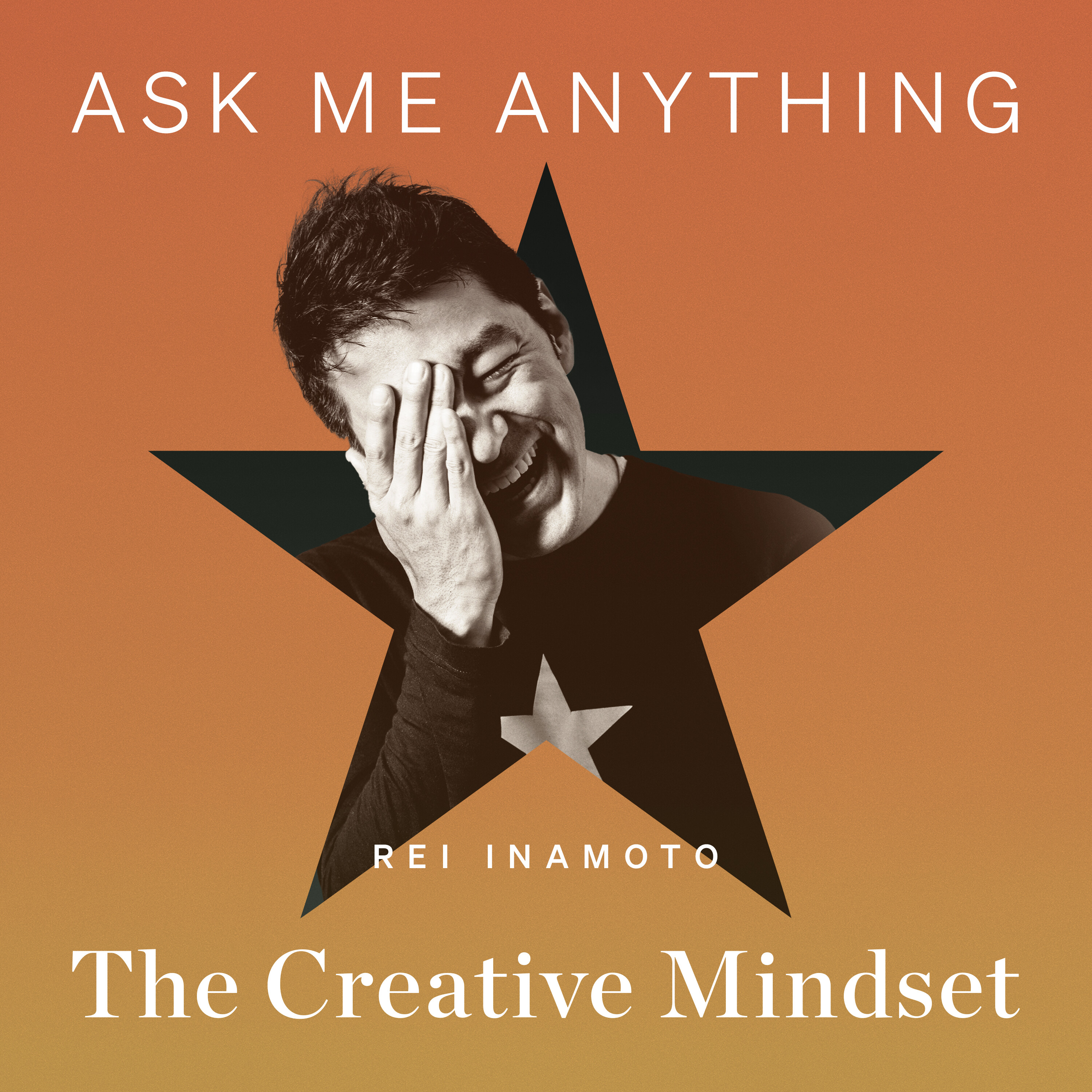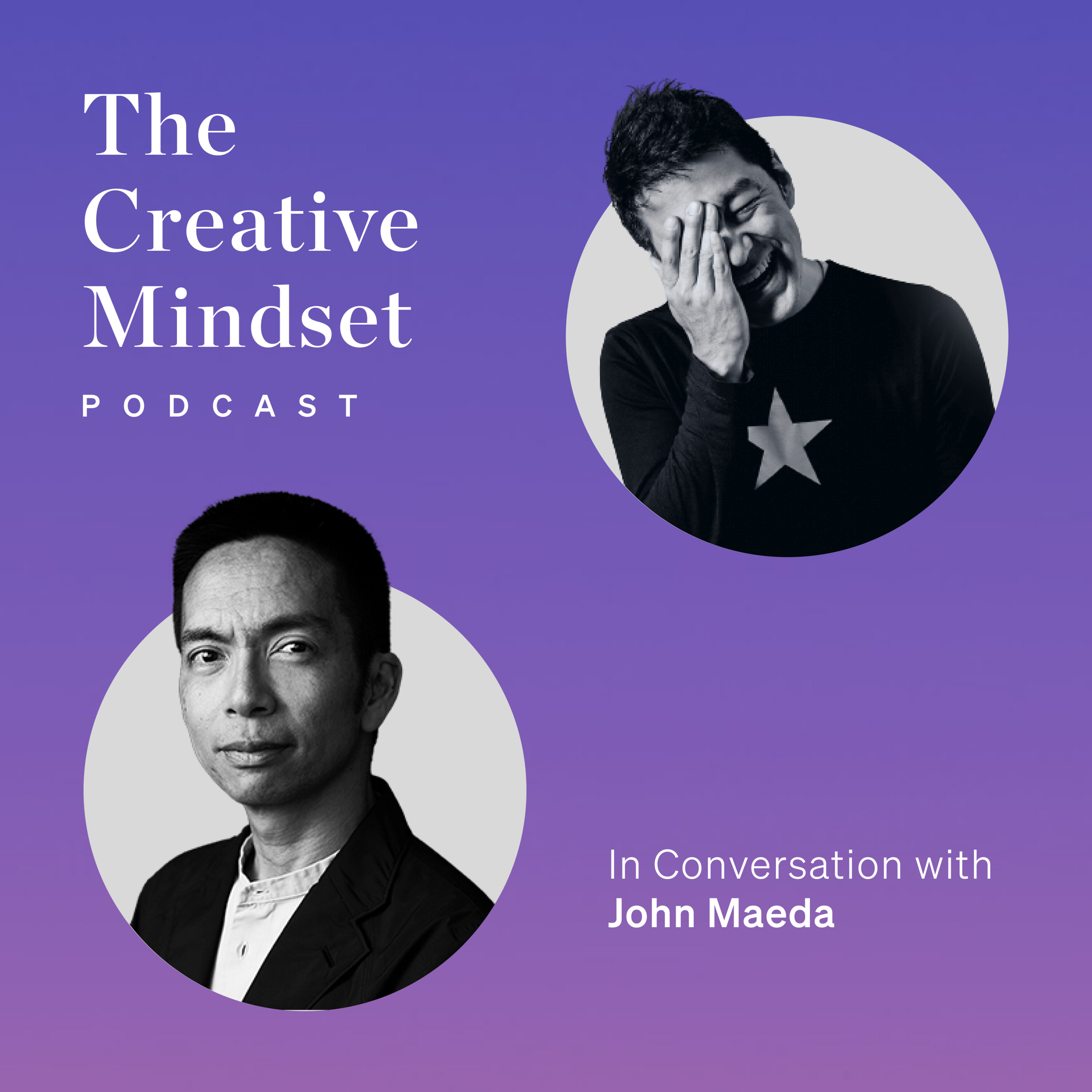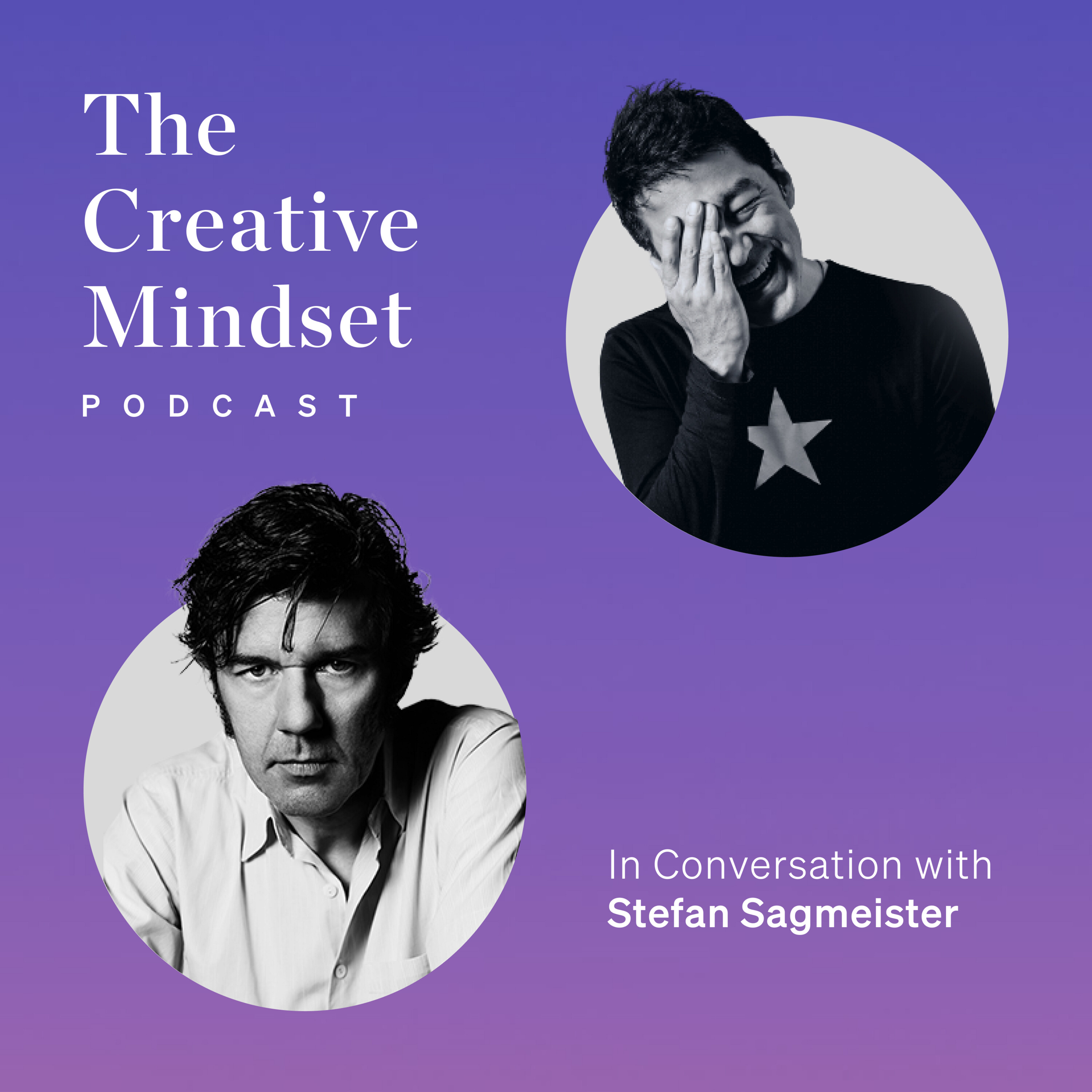This is Reina Moro's podcast, The Creative Mindset.
Hi everyone, this is Reina Moro, the founding partner of I&CO,
a global innovation firm based in New York and Tokyo.
Welcome to The Creative Mindset, a podcast about the art of building a career
through conversations with the world's leading practitioners of creativity.
It's an intimate journey on how they got started, their turning points,
failures, and tips on work and life.
Today's guest is Dr. John Maeda. He needs no introduction,
especially for those of you who are in design and or technology.
I met John 25 years ago when I was a student at the University of Michigan.
I randomly emailed him one day wanting to meet him because he was creating the kind of art and
design using technology, specifically programming. And I was mesmerized by the work he was releasing
at the time. This was in the 90s. And I think it was my second year in college that I discovered
his work. And I was so fascinated that I emailed him randomly, like I said, and to my surprise,
he emailed me back and asked me to come meet him. I took a Greyhound bus, I believe,
and, you know, spent hours getting to Boston where he was at the time at MIT at the
Massachusetts Institute of Technology. And he gave me some time to chat and the rest is history.
So we get into that early part of my relationship with John and how I didn't meet him for
close to a quarter century and what kind of influence he had on me. The first part of this
conversation with John goes into what he thinks about creativity and how he became what he calls
a bridge person and the kind of perspective that he has not only on work but on life and how he
lives the professional life as well as the personal life that he has. So let's get started.
Okay, John, it's good to see you. Wow, this is so good. So I just want to start by saying
or recalling the first time that we met. And it's going back more than 20 years,
I think 25 years almost back in 1998 or 1999. I remember there was this strange Japanese guy
who came by. I thought, wow, he's a good looking guy. Like, first of all, this took out and like,
okay, so he's got some ideas and he's doing something really hard because many Japanese
stopped going international and they were stuck in their country. And I was so impressed how like,
wow, this guy like left Japan. It's so hard. When you speak Japanese, you don't want to speak any
other language. And that impressed me. I was an art student at the University of Michigan
and you were already a famous designer slash technologist doing all these interesting
experimental digital art at the MIT Media Lab Aesthetics and Computation Group, if I recall
correctly. So I think it was during my spring break, I trekked from the University of Michigan
to Boston to visit you at the Media Lab. You gave me two pieces of advice. One was you need
to get better at design, specifically typography. And in order to do that, you should just walk
around, look at the street signs, and that's how you study typography. That's what you do.
The second thing is, is you should learn programming, you know, learn how to code.
And then you apply to the MIT Media Lab. I said that same thing, not the typography
one, the coding one, to maybe a couple hundred people. And very few people took my advice.
I think the meeting that we had was only about 20 minutes or so. And if that, and I went back
to the University of Michigan and then I added computer science as my second degree. So I got
two degrees, you know, took an extra year to graduate. I think I did apply to the Media Lab
when I graduated, but I didn't get in. Yeah. But, you know, that advice that you gave me,
I took it to heart. And that became sort of the central theme for my career loosely.
So, you know, just wanted to start by saying, thanks for giving me the advice 25 years ago,
I think. And, you know, you were my mentor and hero from afar.
You know, at the time I thought, I was like, later on, I was like, Oh my gosh,
this guy's so famous. Wow. So anyways, I admired you from afar and what you achieved.
And so I'm glad that we've been able to reconnect this way.
Yeah. Thank you all. Thanks for your kind words, John. You're Japanese American.
You grew up in the US.
Yeah. Well, you know, I was born and raised in the United States, but my father made tofu.
So I was the son of a tofu basically, which most Americans cannot relate to, first of all.
You know, in the seventies, nobody knew what tofu was. So I had a hard time fitting in as a child
because of that. Yeah. Well, I think the advantage of growing up in a tofu is that,
you know, my parents didn't know what I could become, but they remembered that the customer
who would come with a nice car was an engineer at Boeing. So they thought, Oh, if my son becomes an
engineer, he could have a nice car. So that was the basic logic there, nothing deep at all.
So you go to MIT and I was like, huh, so I'm good at drawing and I'm good at math.
And so at the time the computer had just become visual, the Macintosh became real.
1984 is when I went to MIT. So people who could do both visual and code were very rare. So I would
always be asked to design icons because it was a very rare skill on campus at MIT. And the problem
of being young and scarce is suddenly your head gets very big. Your head gets very big. Like,
Oh, I'm a, maybe I'm a tensai at this kind of thing. However, my graduate work was already
very focused on technology. I worked on semiconductors. So chip design, the physics
inside the silicon. So I had to go on from software down all the way to microchips.
And so I was way down in the, in the stack. But, um, I remembered, uh, I finished my master's and
I thought maybe I want to do this design thing instead. So I switched and I went to the media lab,
which at the time had a design program led by a woman named Muriel Cooper at the media lab.
Muriel Cooper said to me, you have to go and learn art and design. You cannot come here.
So that's why I never went to media lab and I did art school instead. Well, actually I was at the
media lab for one year as a PhD student, but my advisor left. He was a image coder person. And so
nobody, I had no advisor, so I could stay if I wanted to. And I said, Oh, I want to work with
Muriel Cooper. And she told me, no, you cannot work with me. You have to go to art school instead.
So, um, uh, there was a research foundation being founded in Japan by Nichidai. It was an MIT media
lab collaboration. So I went to work in a research foundation there. Uh, and I was a researcher,
but I wasn't going to school. I'll tell you why. Um, so I was at the research foundation.
It was led by someone named Dr. Sasaki Tadashi. He was the co-founder of Sharp Electronics.
And so he was already retired and very important, kind of like a mitokomon of innovation
kind of thing, whatever. And, uh, so I was working there and was doing my research, whatever.
And he called me to his office one time and he said, you know, Maeda-kun, I think you should
get your PhD. You should finish your PhD. And we will pay to finish your PhD. And I said, really?
Like, do I have to pay you back? He says, no, no, no. I want you to learn. So I was the recipient
of this strange benevolence of the mitokomon of consumer electronics. And that's what I went to
Tsukuba to get my PhD. What was your, what was your impression of Japanese designers at the time?
Well, well, first of all, I, I know that being like a kind of like a nakama hazure or like you
don't fit in, you know, first of all, American, first of all, but I look Japanese. And then
secondly, um, I'm not a designer. I'm an engineer. So my impression immediately was
not of design per se, but every culture likes to build a wall around itself.
You're either like me or you're not like me. So my immediate entry to that world was,
oh, I'm not like you. So I have to learn. So I studied really hard. I think I know more about
the Bauhaus than any person sort of at Tsukuba. I studied so hard. Bauhaus, Ulm, everything. I did
all the traditional pencil, pen, you know. And so I learned. And then I finally got the respect of
some people that, oh, maybe he can, he's a designer now. But I distinctly remembered I
was at a party in Japan and it was a design party. And I think, I think that people thought I didn't
understand Japanese. And this guy said, oh, that's John Maeda. He thinks he's a designer.
He's an engineer. That's all he'll ever be. But I understood what he was saying. So it was kind of
funny. But I like those moments because as you know, when you're challenged, you say to yourself,
I'm going to beat you. And so, it's funny how years later people think I'm a designer,
but I think really back then nobody thought I was a designer.
So how did you, how did you become a designer? Tell us a little bit about
that process and you went to Tsukuba to study art and design.
I didn't really get along with Japanese people because the Japan I knew was a Japan post-World
War II. So I'm like making tofu, whereas a regular modern Japanese person is way beyond that.
They're in the salaryman world and beyond. So I remembered when I went to Japan and I was
able to study design there, all the old designers love me. Like I remember Tanaka Iko-san loved me
because he was like, oh, this is, he's just like us when we grew up. Because he came from the world
of merchants. And so, all the people who are 70, 80, they love me because they were like,
oh, you're like the old Japanese type person we used to know. Well, it was really,
it was really easy because I'm a son of a tofu, a tofu-san, right? So,
so for some reason, like Tanaka Iko really liked me. He was like, oh my gosh, you know,
you're like the old style Japanese person, even though my Japanese wasn't perfect.
And so, he really took me under his wing. And then, as you know, in Japan, when that happens,
everyone doesn't mess with you anymore. And so, you know, and he was curious about my work.
Another person was Katsui Mitsuo. He was like a great friend because he was also curious about
my work as well. Because he, these people knew that I liked their work, that I studied the
Bauhaus. I understood where they came from. So, I felt home among those people. And so,
in many ways, I was a translator of that generation, is what I see, is what I have
the opportunity to do. There was, you know, there was Macintosh, especially, you know,
starting in 1984, and he was becoming more visual. But I remember the computers were
quite limited. You know, it was still a lot of it was to black and white. And even if there was
color, it was like 16 colors or maybe 256 colors. So, tell us a little bit about that beginning
where you transitioned or transformed into a designer.
It was really easy because the universities have no money. And so, they have no computers.
So, I didn't use a computer. It was just like all by hand. And I stopped using email too.
And I remembered I was in the drawing class and I had this moment where I realized I was reaching
for the undo. I was reaching for undo, but there's no undo. So, I remembered like I had
to change my mental model of digital into analog. And what's nice is that, you know,
when I was just a programmer, I could build anything, but I didn't know what to build.
But after the design training, I knew what to build. So, now when I was coding,
I could build what I wanted to build easily.
Tell us a little bit about your transition back into the US.
Yeah. Well, it was the mid 90s and the internet had happened. So, the work I made could be put
on the internet. When Java came out, I created a bunch of pieces for Shiseido that were dynamic.
When Sony.com emerged, I designed Sony.com's webpages, the front page, which as you remember
at the time, that's all they had, the homepage. So, it is that kind of stuff. And then,
Meryl Cooper died in 1995. And then, so, there was a kind of a search for someone to
carry in her kind of footsteps. So, you were brought back to MIT Media Lab.
Well, you know, there was an open call. So, I remember responding to the open call.
So, then I got the offer and when I arrived, I wanted to work on this mixture of code
and something that is visual, something that is artistic. It's hard to remember,
but you remember where nobody thought the two should be connected. Nobody thought that code
and design are, it's two different worlds. People felt so strongly about that.
You've been an educator for a long time. You've taught many, many people, either directly at
MIT Media Lab and Rhode Island School of Design, or indirectly, like, you know, a young guy like
me who just walks into your office and shows you printed books. If you are being asked by
an engineer or quote unquote, you know, this is a stereotype, but a non-creative person,
how do you teach them creatively? Well, first of all, when I was at MIT,
I realized that in a thousand engineers, I can find 10 that are interested in art.
If I talk to a thousand artists, I can find a hundred that want to code. And I think now
it's got to be out of a thousand, it has to be around 300 now. But still, I think engineers
don't want to create art. I think business people don't want to do that as well.
So, I think that's the kind of numbers game that exists. Business people have discovered
quote unquote, design thinking. Engineers have discovered front-end engineering.
So, there are flavors of that that already exists. So, and I think that's fine. I think the bigger
question, however, is why are artisan designers more divergent than the convergent business people
or the convergent technology people? It's because they suffer more. Because artisan designers are
better equipped to have empathy for others because they feel things about themselves.
And through that, they feel problems. And as we know, the root of all interesting design
is a good problem. So, I think the problem in business people usually is that they have had
no problems. Or engineers will solve the problem very quickly, but it's a technical problem. But
not an emotional problem, usually, if they're lucky. I think artisan designers solve emotional
problems their entire life. Why? Because they're strange. They're different. They're not convergent.
So, you know, but it's like, I don't know how to do that. I'm an artist. I cannot be
about making art. But in general, society bothers me because I can feel it.
So, that's the difference. What emotional problem do you think you are solving then?
Oh, for me, I'm a great example of a bad example. As someone who's a... I'm a highly
functioning autistic type person who is very low on affect. I can find things around me to sort of
feel. And I think years later, I wish I was as good an artist or designer as you are. I mean,
you talk about comparing yourself to others. I'm like, oh man, I can't do that. I can't do
that kind of thing. But I feel very comfortable in that I am a bridge person. You know, like when I
was at MIT, I discovered that I didn't understand business. So, I got an MBA. And so, I went to
Kleiner Perkins to work in venture capital. I want to understand all this, you know. And so,
I can speak fluent business, you know, like yourself, speak fluent technology, like yourself,
like fluent design, like yourself. And I think that this kind of bridging thing,
I don't have any problems, but I see a lot of problems in people around me.
And I get to help solve those problems. I think you have the same curse, because you understand
why the designer is upset. You understand why the engineer is upset. You understand why the
investor is upset. You understand all their problems and you get to be the bridge. That's
a good thing. So, to be a bridge person, you have to be comfortable being the door and the doormat.
What that means is you open the doors for people, but you're also the doormat. People walk on top
of you. So, you have to have a kind of boldness and a kind of humility knowing that this will
happen. Many bridge people get tired because they're the doormat. And the doormat is a very
unexciting part of the job, but it's necessary. That was part one of my conversation with John
Maida. So, I'd like to share three key takeaways from my chat. Number one, being a bridge person
requires you to be a doormat. Number two, artists suffer more. And number three, give time to the
younger generation. My key takeaway number one, being a bridge person requires you to be a doormat.
One of the things that John mentioned about the way he built his career and the role that he has
played first somewhat subconsciously, and now he's playing this role more consciously, is for him to
be a bridge person. Either in terms of his profession, he started as an engineer and he
later became a designer that allowed him to be a bridge between technology and design. And later,
as he grew older and he became aware of his own heritage as an Asian American person
in the United States, and especially when he went to Silicon Valley, he said that
he became more aware of the fact that there weren't diversity that he was used to at other places.
But the point that stood out for me and that made an impression specifically was this idea of being
a doormat. A bridge gives you a nice image of you being the person to sort of carry one perspective
to the other perspective, but also you have to be willing to be stepped on. And that is not
necessarily a nice image per se, but I thought it was really refreshing for me to hear from such an
established person as John to say that he's willing to be a doormat so that people step on him to get
from point A to point B. Sometimes you feel the pain being a doormat, but that is what you have
to be willing to do. And especially as you get older, I think you have to be willing to sacrifice
a little bit of yourself to give room and space for other people to succeed. So that was point
number one, being a bridge person requires you to be a doormat. Key takeaway number two, artists
suffer more. What he said here was that artists and designers solve emotional problems.
We feel more pain, perhaps because we put more emotion into the work we create. And a lot of the
work that we create is based on, of course, certain skills that we have as artists and designers,
but we put a lot of ourselves into the work, the feelings and emotions and a lot of our
life experience into the work. And as a result, what we are trying to do either directly or
indirectly is to solve emotional problems that other people might have. To do so, we may need
to suffer more in order to get to that output. I think I knew before hearing it clearly from
John, but when he heard it, it clicked with me, the fact that artists do suffer
emotionally and personally in order to create what they create. One image that came to my mind
when I heard this phrase from him was the famous Dutch painter Van Gogh, you know, Wiesen Van Gogh.
And he famously cut off his ears in the later part of his life, which I think was in his 30s,
so not that old, but he wasn't mentally well. He was even admitted to a mental hospital
and towards the end of his life, before he took his own life, that he cut his ears. And that just
creates a very painful image in me, but that also highlights the kind of suffering that artists
do go through. And, you know, I'm not saying neither was John that artists need to suffer
more in order to create works of art. It's just that we might be a bit more sensitive to our own
pains as well as other people's pains. Finally, key takeaway number three, give time to the younger
generation. I randomly emailed him, you know, a quarter of a century ago because he was somebody
that I didn't know directly. I just knew his work through the internet. And to my surprise, he
replied back and he gave me time to come meet him. And it may have been only 15, 20 minutes of the
time that he gave me, but, you know, he gave me much more than that. He gave me advice that I took to
my heart and I followed. And that had an enormous influence on me that I didn't know until much, much
later in my career, what kind of difference that few minutes that John gave me had on me.
And now that I'm probably, well actually I'm much older than he was when he met me when I was 20
or 21. And I do get from time to time, not a lot, but time to time random inquiries from
random, you know, people, especially young people. And they ask me to give them advice or
have an opportunity to talk to them. And to the best extent that I can, I actually make a point
of responding to these random emails that come from, especially from students and from young people
seeking advice, because having done it myself, it requires for young people to reach out to
those who are much more established and much older than them. And to pay respect to that courage
that young person has demonstrated, I try to return the favor by responding to
every single one of the emails that I get from young people. And the message that I would have
to, well, to older people is give that time to the younger generation, but also to the young people
is, you know what, it might require you to pull up some courage from yourself to email that random
person to, you know, to a famous person, to an established person. And you might not get a
response from them, but don't be shy. You know, feel free to reach out to the people that you
respect and admire and make a point and take the time to go meet those people. That impact,
that influence that you get from them are unbelievably life-changing. And you might not
realize at that point, but later on, you will appreciate your younger self for doing so.
So young people, just take just a little bit of courage to email, to call people that you admire,
and you never know what you might get either at that point and or much later in life.
To summarize my key takeaways, three key takeaways from my conversation with John Maeda. Number one,
being a bridge person requires you to be a doorman. Number two, artists suffer more
because we solve emotional problems. And number three, give time to the younger generation.
And if you're a young person, go meet the people you respect and admire. Part two of my conversation
with John Maeda dives deeper into the definition of creativity and what he thinks about creativity,
which I found to be quite surprising, and some of the influences that he had from earlier part
of his life. So stay tuned. I am Reina Moro, and this is The Creative Mindset. See you next time.
